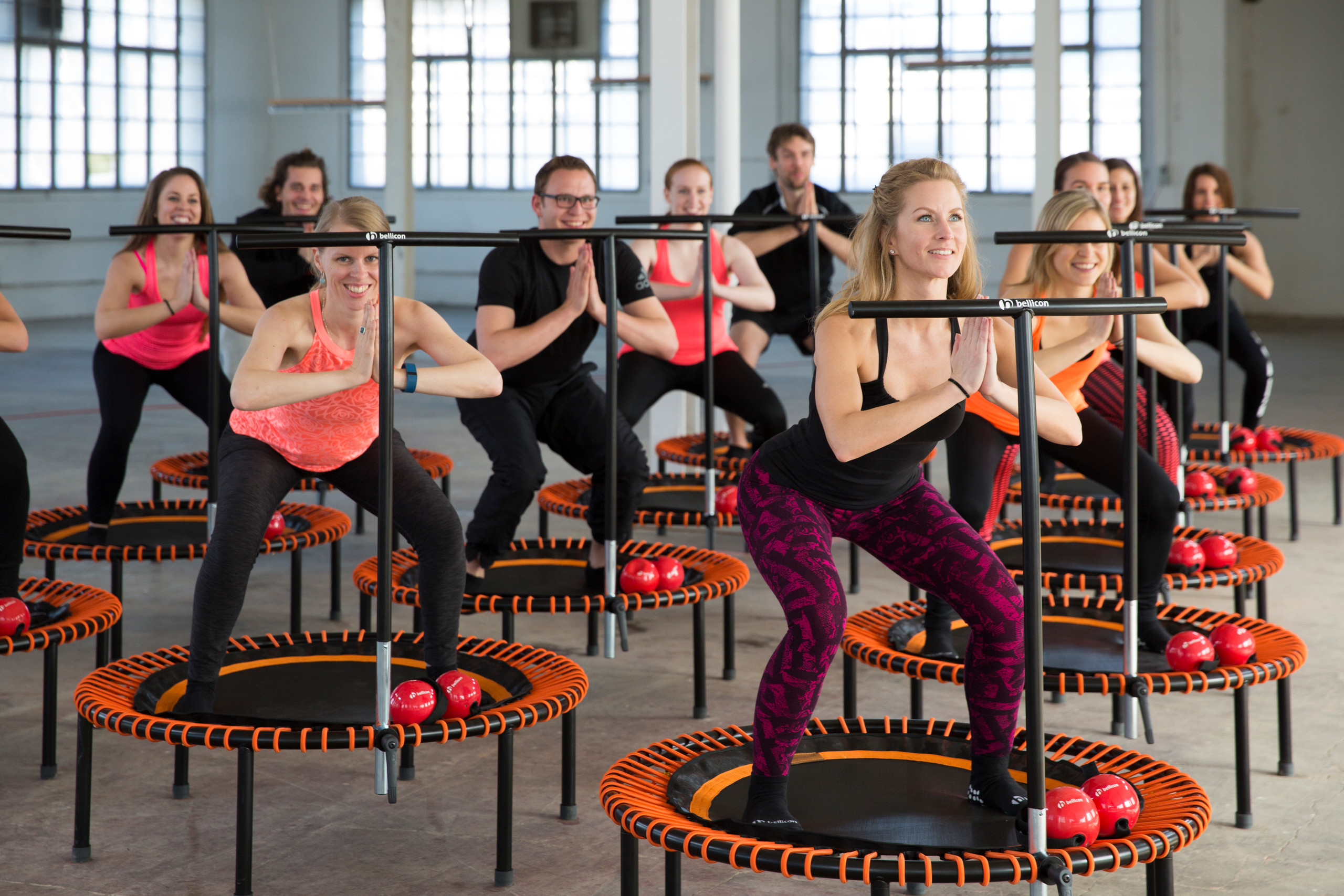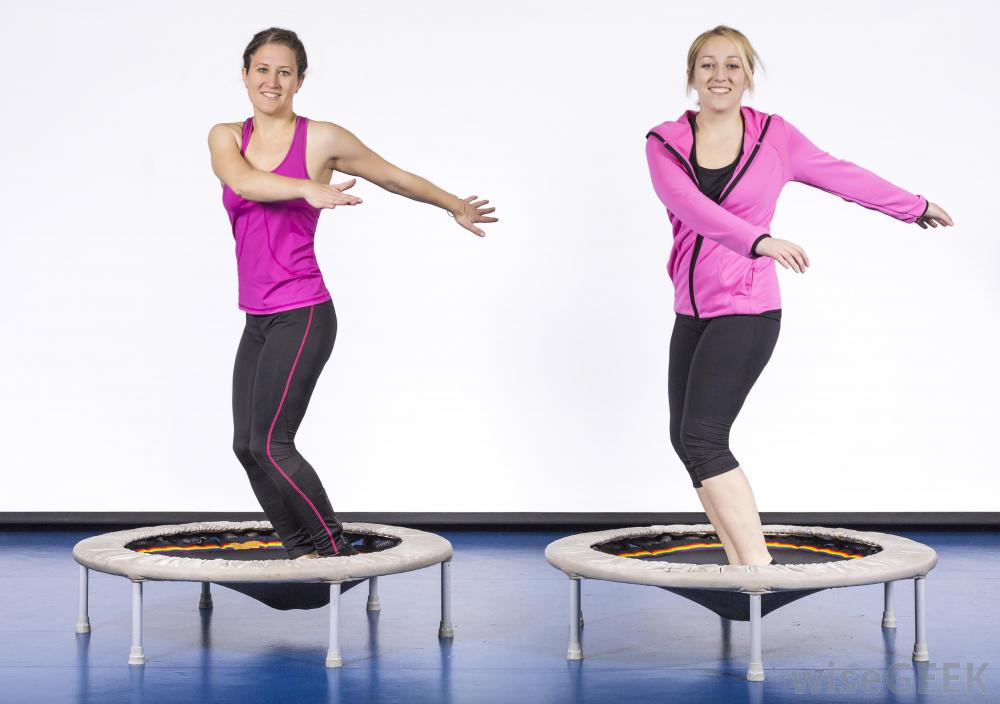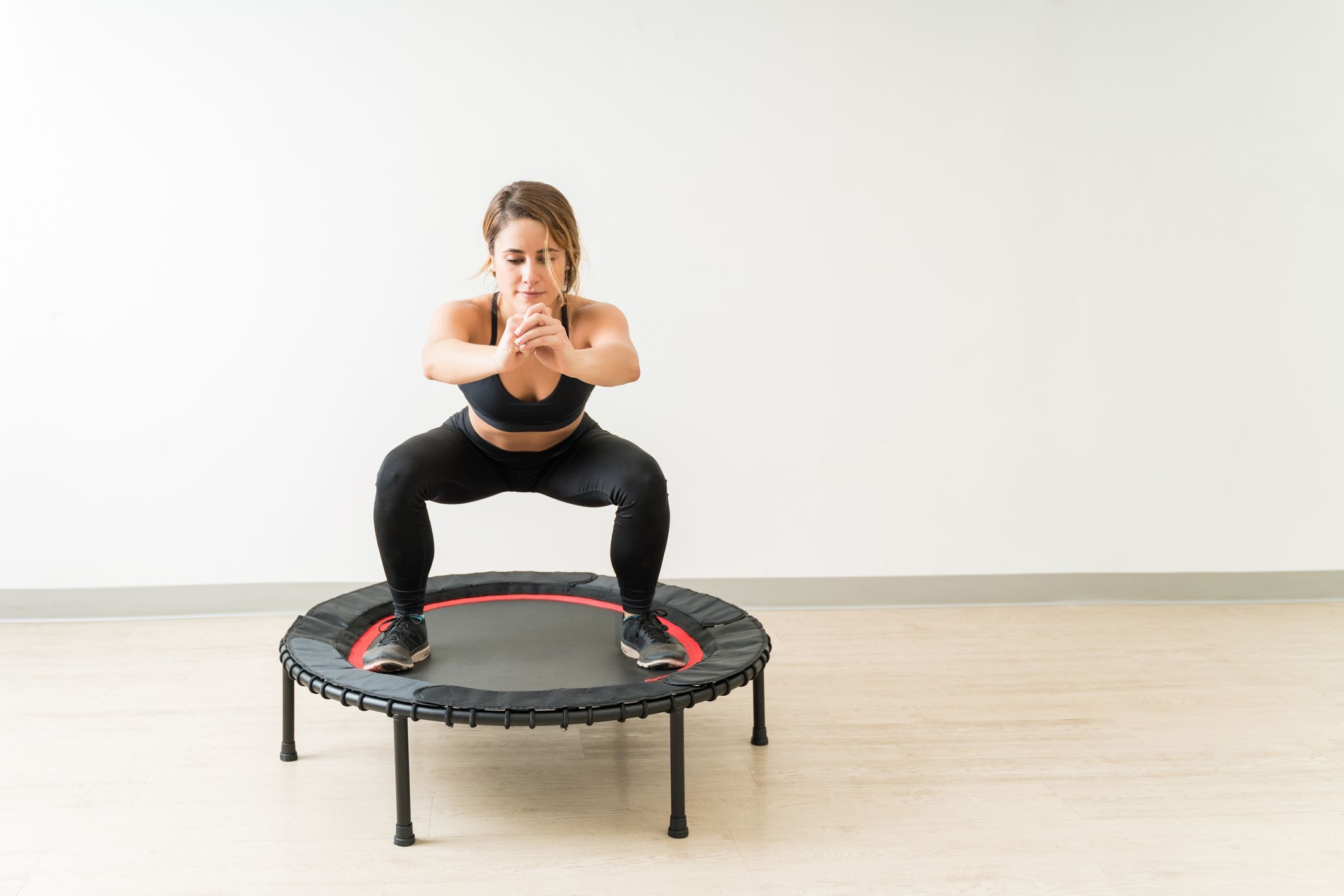Working out on a mini-trampoline, also known as a rebounder, is a fun and effective method to get in shape. To conduct rebounding exercises, all you need is a rebounder and a modest area. Several workouts may be performed to target specific muscles or just to enhance cardiovascular function.
On the other hand, rebounding is unique in that it combines both acceleration and deceleration to operate on each cell in your body uniquely. As a result of the rebounding, many actions take place. As you rise, you begin to accelerate. Then there’s a weightless break at the peak before you descend back to the mat with increasing G-force. This rebounding process is repeated after your impact.
Is Rebounding Better Than Running?
- In a nutshell, yes, it is preferable to running. Rebounding or jumping on a small trampoline is:
- Running is twice as effective in improving aerobic fitness.
- Fat-burning efficiency has increased by 50%.
- Running is not the most effective way to improve maximum oxygen intake.
- Traditional running causes more joint stress than jumping or running on a rebounder.
Why Should You Give Rebounding a Try?
Rebounding is a cardiovascular workout with a minimal impact. It’s suitable for people of all ages, from youngsters to senior citizens.
The following are some more advantages of rebounding:
- Abdominal (core), leg, buttock, and deep back muscles are all worked out.
- It may aid in the improvement of endurance.
- The lymphatic system may be stimulated. Rebounding may aid in the removal of toxins, germs, dead cells, and other waste items from your body.
- It may assist you to enhance your balance, coordination, and overall motor abilities.
- It may be an excellent alternative if you have osteoporosis since it supports bone density, bone strength, and bone production while reducing bone resorption. Bouncing applies modest amounts of pressure to the bones, which aids in their strengthening.
According to anecdotal reports, it may help with pelvic floor health. Bouncing engages the deep core muscles, which assist to avoid urine incontinence and support hip joints.
How To Get Started?
You’ll need to buy a mini-trampoline for home usage or join a gym that offers them to attempt rebounding on their own.
If you’re thinking about buying one, keep in mind that trampolines come in various shapes and sizes. Make sure to get an adult model that will fit in the corner of your home. Before placing an order, double-check your measurements.
What to Look for When Purchasing a Mini-Trampoline?
The perfect rebound trampoline should have strong, solid legs. Typically, the circumference is between 36 and 48 inches.
It should support an adult’s weight, which should be between 220 and 250 pounds. Larger trampolines can hold greater weight, as you’ll see.
Another excellent feature is a quiet performance, which means the springs don’t create any noise when you bounce.
If you’re low on room, a folding model that quickly stows away could be a good option. Some mini-trampolines come with a handlebar, which is useful if you’re a novice. You might even find a couple with a built-in tracker to keep track of things like leaps per minute and calories burnt.
How To Rebound?
Warm-up your muscles with a few minutes of simple jumping. When you first begin, the goal is to become used to the sensation of leaping. It’s not something you do on a regular basis.
The right technique to leap isn’t always what you’d do instinctively. You should attempt to stomp on the trampoline’s surface. You don’t even have to leap very high; one to two inches would suffice.
Basic Jogging
A simple jog on the trampoline is an excellent place to start. It entails jogging in place while maintaining your back straight or bending slightly backward and raising your knees in front of you one at a time. Pump your arms at your sides like you would when sprinting on the ground.
You may just want to elevate your knees a few of inches if you’re a novice. Once you’ve gained enough strength, you may go on to high knees, where your thigh is parallel to the ground underneath you.
Advanced Jog
You can move about on the trampoline once you’ve mastered the jogging form. Begin with a simple jog and gradually widen your posture. While jogging, you may even raise your arms above your head.
Jogs from one side of the trampoline to the other as the training continues. Different muscle groups can be activated by moving from side to side.
Jumping Jacks
On a rebounder, jumping jacks aren’t the same as regular jumping jacks. It would help if you stomped down as you move your legs in and out when performing jumping jacks on a rebounder.
Your arms do not need to go overhead, and your body should be bent slightly forward. Instead, when you power down with your legs, move them in and out to your sides.
Continue in this manner for another 2 to 3 minutes.
Pelvic Floor Bounce
Place a soft, squishy workout ball between your knees to train your pelvic floor on the rebounder. Then, while you breathe into your pelvis, softly start bouncing. To concentrate on this region, lay your hands on your pubic bone.
Exhale while you bounce for 2 to 5 minutes, squeezing your inner thighs together. Begin with a lesser duration and gradually increase the time as your strength improves.
Intervals
While any of these workouts may be done for any amount of time, alternating intensive and recovery effort will help you burn more calories and improve your overall cardiovascular fitness.
Jump with a heavy effort for 20 seconds and then rest, or jump with a light effort for 10 seconds and then rest. Rep these intervals seven times more.
As you gain strength, you can extend your intervals to a minute or longer.
Weights
Once you’ve become used to leaping, you may up the ante by doing a higher-intensity workout with weights.
Start with modest hand weights (2 to 3 pounds) for a few minutes and work your way up to bigger weights and a longer period if you desire to add weights.
How Often Should You Rebound?
There is no specific amount of days that you should integrate rebounding into your regimen. Participants who exercised on mini-trampolines for as little as three days a week experienced significant advantages, including more incredible running speed, according to a 2018 research.
It’s entirely up to you and your fitness level how long you jump each time. With just 15 to 20 minutes of exercise on a mini-trampoline, you may get several advantages. If you’re new to rebounding, though, you might want to start with shorter exercises and work your way up.
23 Benefits of Rebounding for Weight Loss
1. Helps To Improve Digestion And Elimination
This will not only make you feel less bloated, but it will also aid in the removal of toxins from your body.
2. It Boosts Your Metabolism
You might burn more calories during the day if your metabolism is robust.
3. Reduces triglyceride and cholesterol levels
Cholesterol and weight are typically linked, thus reducing your cholesterol is crucial if you want to lose weight.
4. It Helps To Get Rid Of Cellulite
A clogged lymph system is a common cause of cellulite. Rebounding can help to diminish one of the primary causes of non-hereditary cellulite by improving lymphatic flow in the body.
After just a few months of rebounding regularly, women frequently see a cellulite reduction.
5. Exercise That Promotes a Healthy Metabolism
Long periods of aerobic exercise may sabotage your weight reduction efforts since prolonged “breathless” activity lowers your metabolism. Rebounding, a metabolic-supporting activity is an important element of weight reduction since it helps you to breathe easily during your workout.
6. Maintains Weight Loss
Ninety percent of persons who have lost weight and kept it off continue to engage in daily physical exercise for a year. Rebounding is an excellent technique to keep a newly slimmer body.
7. Aids In The Prevention Of Emotional Eating
The rush of feel-good chemicals you experience after rebounding helps to manage your mood. This has a direct influence on those who eat to assist boost their mood when they’re unhappy.
8. Boosts Stamina So You Can Keep Going
Rebounding on a regular basis boosts your stamina by increasing the creation of neurotransmitters, which aid in energy generation. Because of your improved stamina, you’ll be more motivated to begin active and reduce weight.
9. Assists You In Maintaining a Healthy Blood Sugar Level
Rebounding can help you reduce your blood sugar and enhance the way your insulin works. This can lower your chances of getting metabolic syndrome and type 2 diabetes. Rebounding can help you manage one of these diseases if you already have one.
10. It Helps To Burn Calories
You must have a 3,500-calorie deficit between what you eat and what you burn to lose a pound of fat. Rebounding aids in the rapid burning of calories.
11. It Flattens Your Stomach
You may execute several exercises while rebounding to target different parts of your body. To help define your waist, practice oblique twists while jumping. Twist your hips one direction and your chest the other while jumping, then swap sides.
12. Has A Domino Effect
If you do some rebounding first thing in the morning, you’ll be more likely to make healthy choices throughout the day, resulting in more weight reduction.
13. Is Easy and Portable
One of the nicest aspects of rebounding is how easily it can be done. You can use your rebounder indoors or outdoors, so the weather will never stop you from working out.
However, if the weather is beautiful, you can take your rebounder outside and enjoy it. This will enhance your chances of sticking to your rebounding routine.
14. Works Well With High-Intensity Interval Training And Burst Training
These two popular kinds of exercise, which burn calories, build endurance, and improve overall fitness, can easily be done on a rebounder, making it a more convenient method to get in shape in less time.
15. Has Anti-Inflammatory Effects
Rebounding effectively promotes and aids lymphatic drainage, which reduces inflammation in the body.
16. Boost Your Self-Esteem
You can feel better about yourself by rebounding. The sheer act of completing exercises like rebounding (rather than fitness itself) has been demonstrated in studies to make you feel you look better.
17. It helps to strengthen the heart
Because heart disease is the leading cause of mortality in the United States, it’s essential to pay attention to your heart health.
18. Aids in The Circulation Of Oxygen To The Tissues
To function correctly, every tissue and cell in your body requires a continual supply of oxygen. Every organ, notably the brain, heart, and kidneys, might suffer if tissues and cells do not receive enough oxygen.
19. It Promotes Lymphatic Drainage
To keep your blood and lymphatic fluid levels balanced and to remove toxins from your body, your lymphatic system works in tandem with your cardiovascular system. In order to establish a defense against infections, the lymphatic system transports immune cells throughout your body.
20. Increases The G-Force In Your Body
Increased G-force (or gravitational load) is beneficial to your health and strengthens your musculoskeletal systems.
21. Helps To Expand Lung Capacity
Lung disease patients may have a reduction in lung capacity over time. This is the greatest quantity of oxygen your body can utilize, and it’s a crucial element of getting oxygen to your cells.
22. It Helps To Lower Blood Pressure
Rebounding causes your muscles to contract, causing veins and arteries to compress in a cyclic pattern. This aids in the efficient movement of fluids throughout the body and back to the heart, lowering peripheral blood pressure.
23. It Improves Endurance
Rebounding for at least three times a week for more than 20 minutes at a moderate effort helps to improve your mitochondria, which benefits your overall endurance.
Final Thoughts
It is not only possible but also enjoyable to achieve your fitness objectives while running on a rebounder. Rebounders have swiftly gained popularity among people of all fitness levels since they provide benefits faster and with less danger of injury than traditional training techniques. The advantages of using a rebounder over other, more sophisticated workout equipment will have you coming back for more.


